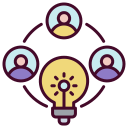Innovative Tools for Remote Team Collaboration
Innovative tools for remote team collaboration have changed the way organizations operate, enabling seamless communication, streamlined project management, and a collaborative environment despite physical distances. These tools go beyond simple messaging applications; they encompass a host of features such as virtual whiteboards, cloud-based document editing, real-time feedback mechanisms, and robust video conferencing platforms. With the rise of remote work, leveraging these solutions is crucial for maintaining productivity and team cohesion. The following sections explore essential categories of tools that foster efficient collaboration among remote teams, highlighting their unique benefits and key functionalities that address the specific challenges of working apart.
Real-Time Communication Platforms
Instant Messaging Systems
Video Conferencing Solutions
Persistent Collaboration Channels
Virtual Project Management Boards
Task Assignment and Tracking
Visual Workflow Mapping
Integration with Third-Party Apps

Asynchronous Collaboration Solutions
Threaded Discussion Forums
Shared Knowledge Bases
Recorded Video Updates

